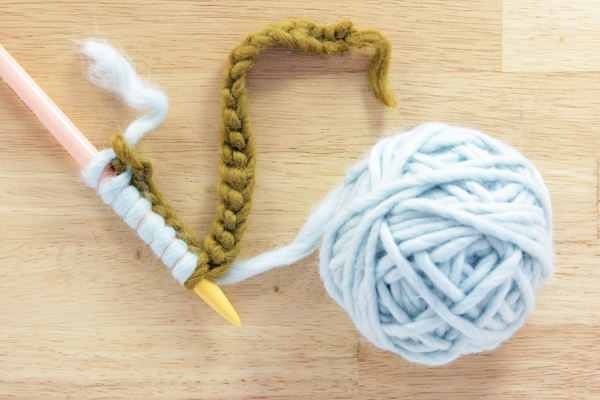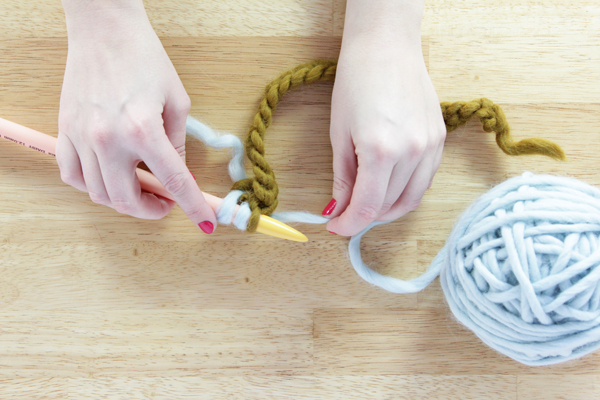
Cowls are such a popular & stylish thing to knit these days that I finally had to jump on the bandwagon with some Christmas knitting last month. The first thing I learned to do was something called a provisional cast on. Basically it’s a way to start a knitting project invisibly. It lets you leave stitches “active,” so at the end of your cowl, you can sew the starting end’s loops to the finishing end’s loops to form a scarf that doesn’t have a distracting seam. You can also do this by knitting in the round. Sometimes, though, knitting in the round doesn’t make sense for a particular project, and sometimes, you might not be a knitter at the point of knitting in the round yet. I think using the provisional/invisible cast on is easier than learning to knit in the round, for what it’s worth. :)
To do the provisional cast on, you simply have to begin by making a length of chain stitch that’s a few stitches longer than you’d like to cast on. You’ll be tossing this chain later, so you can just use some scrap yarn that’s similar to the yarn for your project. Since I’m making a cowl with bulky yarn and don’t own a big, fat crochet hook, I opted to make my chain with finger knitting, which you can learn to do here.
One side of your chain will have ridges on it (the item pictured first below), and the other will have V’s.

Grab your finished chain, and stab your knitting needle through one of the ridges on the non-V side of it.

Wrap your yarn over your needle as if you were knitting normally, and pull the yarn back through the ridge. Keep doing this until you have enough stitches cast on.

How to do a provisional cast on (video tutorial)
For folks who prefer video, here’s all that again, but in another format:
Grafting your ends
That’s it! When you get to the far end of your work, you’ll pull out the chain stitching from the edge of your work and sew those loops to the loops on the other end of your work using a kitchener stitch (a.k.a. grafting). Here’s a tutorial for how to work the kitchener stitch. :)

If my instructions aren’t quite clicking for you, I also like these provisional cast on tutorials, some of which use a different technique for accomplishing the cast on: The Purl Bee / knitty / knittinghelp.com (video tutorial)






 & shop new patterns
& shop new patterns 





I learned something new today…many thanks -I do a lot of knitting but I too thought Brioche Knitting involved underwater treading!!!! it gets cold here so, no underwater treading…consequently no Brioche Knitting…..Thanks you so much,again!!! Judy
I am gonna do this, it’s great I didn’t realize I didn’t have to knit in the round. I can only find straight needles where I live and I haven’t really bought online much. Thanks
I have been knitting for lots of years, but never thought of this bright idea. Love it. Makes the finished project outstanding.